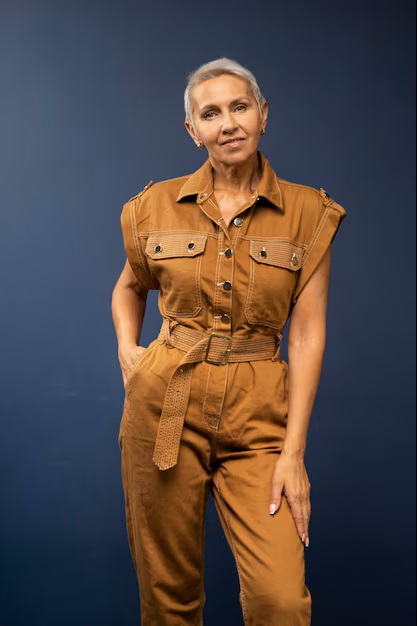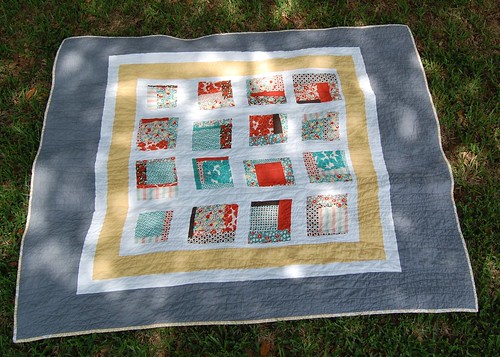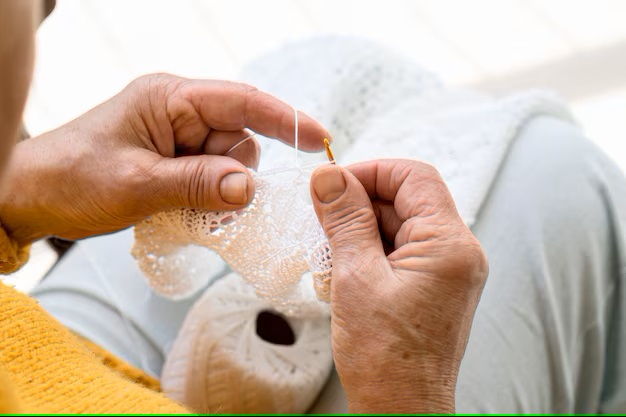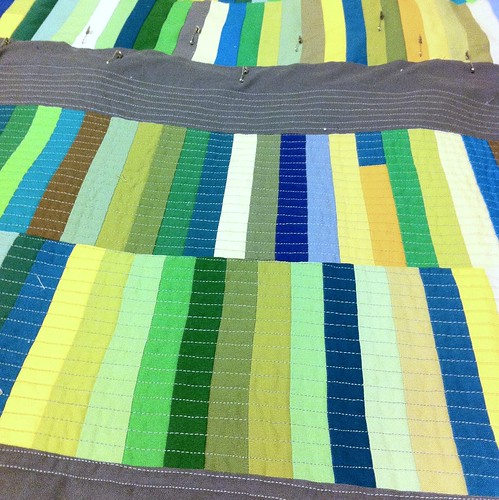Applique Quilting Tutorial: Step-by-Step Guide
To create stunning fabric art, begin by selecting high-quality materials. Opt for cotton or linen, which hold shape and color well, ensuring long-lasting results. Choosing the right adhesives can make a significant difference; consider using fusible web for clean, crisp edges that don’t fray.
Utilize layered stitching to add depth to your designs. Starting with a straight stitch creates a foundation, while experimenting with decorative stitch patterns can enhance visual interest. Incorporate contrasting thread colors for a pop that highlights your craftsmanship.
Practice precision cutting for intricate shapes. Using sharp scissors or a rotary cutter allows for clean lines, essential in achieving polished aesthetics. Templates can streamline this process, making it easier to replicate intricate designs without compromising on quality.
Finishing touches are key; explore various methods such as machine or hand stitching to secure edges and enhance durability. Binding your work not only protects the seams but also adds a decorative flair that elevates the overall presentation.
Choosing the Right Fabrics for Applique
Select tightly woven cotton fabrics for durability and easy handling. Opt for fabrics with a fine, smooth finish to allow for precise cutting and clean edges. Consider using blends that incorporate polyester for added strength and wrinkle resistance.
Select a color palette that complements the overall design. Use contrasting hues for the foreground elements to make them stand out. Incorporate prints and patterns sparingly, as they can compete with the main motifs.
Test fabric combinations before committing to your layout. Place swatches side by side to visualize how the colors interact. This step helps in avoiding clashing tones and ensures harmony in the final outcome.
Pre-wash all fabrics to remove any contaminants and pre-shrink them, particularly if you plan to wash the finished piece. Iron the fabrics to eliminate creases that can affect cutting and placement.
Select fusible webbing or interfacing that suits your chosen materials. Lightweight options work well with delicate fabrics, while heavier types provide extra stability for thicker cloths.
Consider textural variety; combining smooth and textured surfaces can add depth to your design. Just ensure that all materials are compatible in terms of care instructions, especially regarding washing and drying.
Cutting Techniques for Precise Applique Pieces
Use a rotary cutter combined with a cutting mat for accuracy. A sharp blade combined with a ruler delivers clean edges, ensuring your shapes fit together perfectly.
Selecting fabric can enhance precision. Use fabrics with a tight weave to prevent fraying. Lightweight options are easier to manipulate and cut.
Employ templates for consistency. Trace shapes onto lightweight cardstock or freezer paper. This allows for precise outlines and prevents distortion during cutting.
Follow these steps for refined cuts:
- Secure fabric layers with pins or weights to avoid shifting.
- Align your ruler carefully, ensuring it is straight and even with the fabric edges.
- Cut with steady, even pressure, moving the cutter away from your body.
Consider using specialty scissors for intricate designs. These can help navigate curves and corners more easily than traditional shears.
Steam your fabric before cutting to minimize wrinkles. Smooth fabric allows for better visibility of template lines and reduces mistakes.
Practice cutting techniques on scrap fabric to gain confidence. Adjust blade pressure and cutting speed based on fabric type.
Finally, maintain your tools. Replace dull blades and keep scissors sharpened. This ensures smooth cutting and enhances the overall quality of your pieces.
Preparing and Sticking Down Applique Shapes
Choose a lightweight fusible interfacing for your fabric that provides stability without adding bulk. Cut the interfacing slightly larger than your intended shapes, then iron it onto the wrong side of the fabric according to the manufacturer’s instructions. Allow it to cool before trimming the shapes to the desired size.
Adhesive Options
Fabric glue sticks and spray adhesives are ideal for securing your pieces in place. Apply glue evenly along the edges of your fabric shapes, pressing them firmly onto the background fabric. Be cautious with spray adhesive to avoid oversaturation, which can warp the material.
Finishing Techniques
For added security, you can use a straight stitch or zigzag stitch around the edges of your shapes once they are adhered. This not only reinforces the bond but also adds a decorative element to your design. Experiment with thread colors and stitch lengths for unique finishes.
Selecting Thread Types for Applique Stitching
Choose cotton thread for its compatibility with fabric and ease of use. Utilize 40-weight thread for standard projects or 50-weight for finer details. Ensure color matching with your fabric helps in blending or contrasting, depending on the design intention.
Thread Material Options
Consider the following materials:
| Material | Benefits | Best Use |
|---|---|---|
| Cotton | Soft, matte finish, good for most fabrics | Everyday stitching |
| Polyester | Durable, less prone to fading, shiny finish | Wearable items and home decor |
| Rayon | High sheen, vibrant colors | Decorative uses |
| Silk | Luxurious feel, excellent for fine details | Special occasion items |
Thread Thickness and Strength
Use thicker threads for more visible stitches on larger designs and thinner threads for intricate parts. Experiment with tension settings on your sewing machine to achieve the best stitch quality. Always test on scraps to confirm performance before starting your project.
Exploring Different Stitching Methods for Applique
For precise attachment of fabric shapes, consider the satin stitch. This method creates a smooth, glossy finish that prevents fraying. Adjust the stitch length and width according to the fabric weight; heavier materials may require a wider setting for optimal coverage.
Straight Stitching Technique
The straight stitch is a versatile choice, offering simplicity and effectiveness. It can be employed for both permanent and temporary application. To enhance durability, double the stitch along the edges. This approach is particularly beneficial for projects that will endure frequent washing.
Using a Zigzag Stitch
A zigzag stitch provides a decorative element while securing edges. Vary the stitch length and width to create different effects. For a subtle appearance, reduce the width; for a bolder look, increase it. This method is ideal for raw-edge finishes, allowing for a relaxed, frayed look around the design.
Experiment with decorative stitches to enhance visual interest. These stitches can add personality and flair, turning simple pieces into unique art. Always test the chosen method on scrap fabric before applying it to the final piece to ensure desired results.
Finishing Techniques for a Professional Look
Trim excess fabric from the edges of your piece to create sharp lines and a polished appearance. Utilize a rotary cutter and cutting mat for precision, ensuring clean cuts around intricate designs.
Edge Stitching
Perform edge stitching using a straight or zigzag stitch close to the applique edges. This secures the layers, prevents fraying, and adds a finished look. Adjust the stitch length for visibility; a shorter length creates a tighter seam.
Binding Choices
Select a high-quality fabric for binding that complements the theme of your work. Cut the binding strips at 2.5 inches wide for optimal coverage. Fold the binding in half, press, and stitch it to the edges of your piece, mitering corners for a sharp finish.
For an added touch, consider hand-stitching the binding to the back. This method not only enhances durability but also provides a clean, invisible finish, contributing to a sophisticated aesthetic.
Incorporate a washed or faded background fabric to make colorful designs stand out. This subtle contrast enhances visual impact without overwhelming the main elements.
Final Steps
Press the entire piece with a dry iron to smooth wrinkles and ensure all seams lay flat. This final step elevates the overall appearance, making it look refined and ready for presentation.
Q&A: Applique quilting tutorial
How does raw edge applique differ from needle-turn applique in terms of finish and technique?
Raw edge applique involves cutting a piece of fabric to a specific applique shape and fusing it directly onto the quilt top without turning under the edges, often securing it with a zig-zag or blanket stitch. In contrast, needle-turn applique requires the quilter to turn under the seam allowance by hand using a needle and thread, creating a softer, more traditional finish ideal for heirloom applique quilts.
Why is a quilt sandwich essential before beginning free motion quilting around the applique?
A quilt sandwich, which consists of the quilt top, batting and backing, provides the necessary layers and stability for free motion quilting. This structure allows quilters to quilt around the applique smoothly, preventing puckering and ensuring the applique shapes remain securely attached to the base fabric during the quilting project.
What makes blanket stitch a popular choice in raw edge appliqué techniques?
Blanket stitch is commonly used in raw edge appliqué because it not only adds decorative detail but also reinforces the edges of the fabric piece, helping to reduce fraying. When sewn close to the edge using a sewing machine or by hand, this stitch creates a clean finish that enhances both the durability and appearance of the quilt applique design.
How does an appliqué tutorial help quilters apply reverse applique in modern quilt patterns?
An appliqué tutorial guides quilters step-by-step through the process of reverse applique, where a design is cut from the top layer to reveal the fabric beneath. By following clear instructions, quilters learn how to trace, cut, and secure the fabric layers, enabling them to integrate bold, contemporary applique designs into traditional or modern patchwork quilt patterns.
How does a beginner-friendly applique tutorial simplify machine applique for sewing projects like a baby quilt?
A well-crafted applique tutorial breaks down the machine applique process into manageable steps, guiding quilters through selecting applique fabric, preparing appliqué shapes, and securing them with a zig-zag stitch or straight stitch. For projects like a baby quilt, tutorials often include tips on choosing soft fabrics and using free patterns available from trusted sources like a quilt shop or Missouri Star Quilt.
What role does the backing fabric play in the structure and finish of an appliqué quilt?
The backing fabric is the bottom layer of the appliqué quilt and works with the quilt top and batting to form a sturdy quilt sandwich. It supports hand quilting or machine quilting techniques, stabilizes the applique blocks, and affects the overall softness and drape of the finished quilt, especially in projects like baby quilts or wall hangings.
Why is needle-turn applique preferred by some quilters for intricate quilt designs?
Needle-turn applique allows quilters to shape and sew each appliqué piece with precision by turning under the edges using a needle and thread. This hand applique method creates smooth, curved lines ideal for complex quilt designs and results in a seamless, traditional look that is difficult to achieve with machine applique or zig-zag stitches.
How do safety pins and hand quilting work together when sewing around appliqué shapes?
Safety pins are used to baste the quilt sandwich before quilting, preventing shifting of the appliqué fabric or backing fabric. When hand quilting around appliqué shapes, this basting method helps maintain alignment while allowing the quilter to sew detailed stitches that follow the appliqued edges, enhancing the texture and definition of each appliqué piece.




